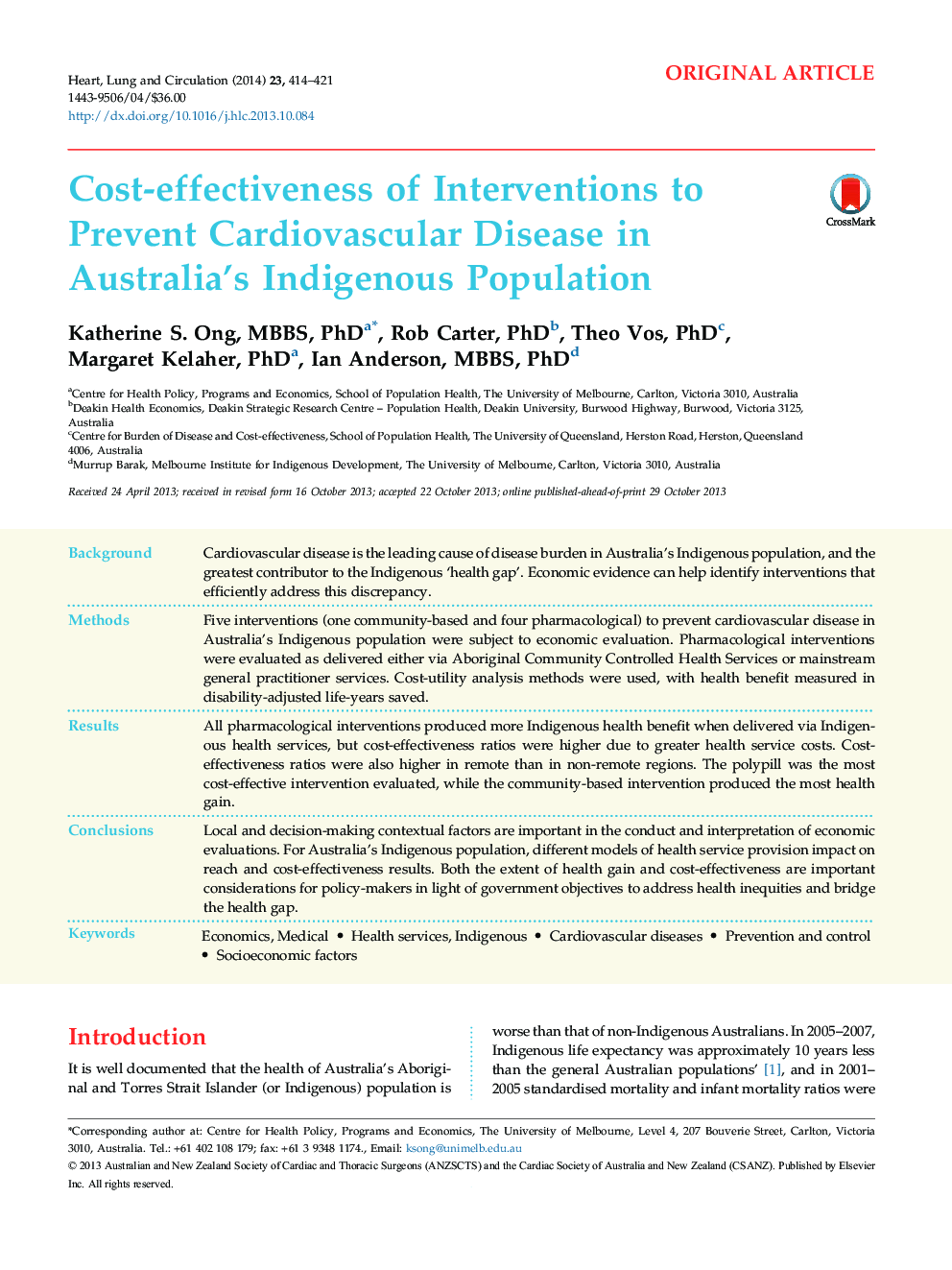| Article ID | Journal | Published Year | Pages | File Type |
|---|---|---|---|---|
| 2918214 | Heart, Lung and Circulation | 2014 | 8 Pages |
BackgroundCardiovascular disease is the leading cause of disease burden in Australia's Indigenous population, and the greatest contributor to the Indigenous ‘health gap’. Economic evidence can help identify interventions that efficiently address this discrepancy.MethodsFive interventions (one community-based and four pharmacological) to prevent cardiovascular disease in Australia's Indigenous population were subject to economic evaluation. Pharmacological interventions were evaluated as delivered either via Aboriginal Community Controlled Health Services or mainstream general practitioner services. Cost-utility analysis methods were used, with health benefit measured in disability-adjusted life-years saved.ResultsAll pharmacological interventions produced more Indigenous health benefit when delivered via Indigenous health services, but cost-effectiveness ratios were higher due to greater health service costs. Cost-effectiveness ratios were also higher in remote than in non-remote regions. The polypill was the most cost-effective intervention evaluated, while the community-based intervention produced the most health gain.ConclusionsLocal and decision-making contextual factors are important in the conduct and interpretation of economic evaluations. For Australia's Indigenous population, different models of health service provision impact on reach and cost-effectiveness results. Both the extent of health gain and cost-effectiveness are important considerations for policy-makers in light of government objectives to address health inequities and bridge the health gap.
